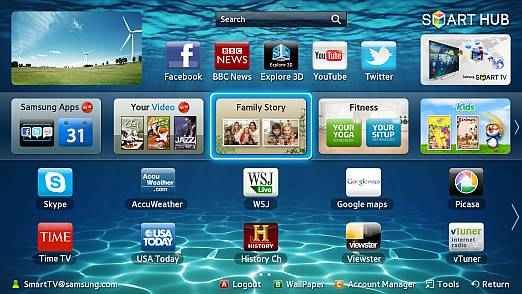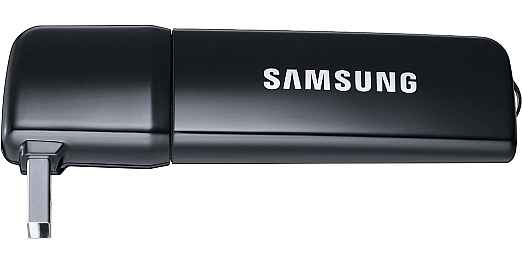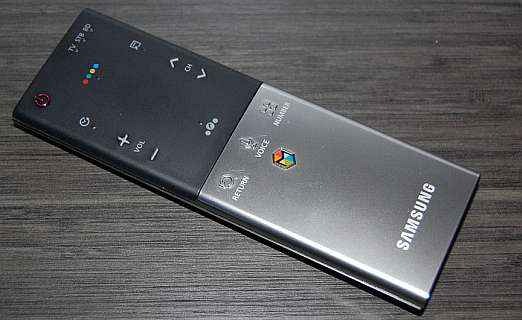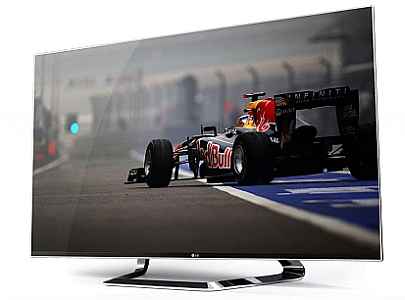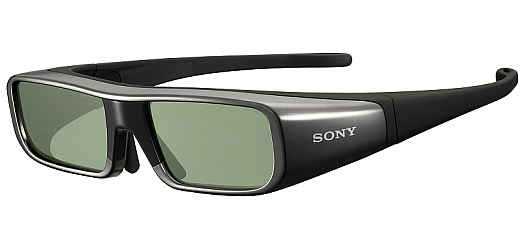Ten questions: Are ‘smart TVs’ really that smart?
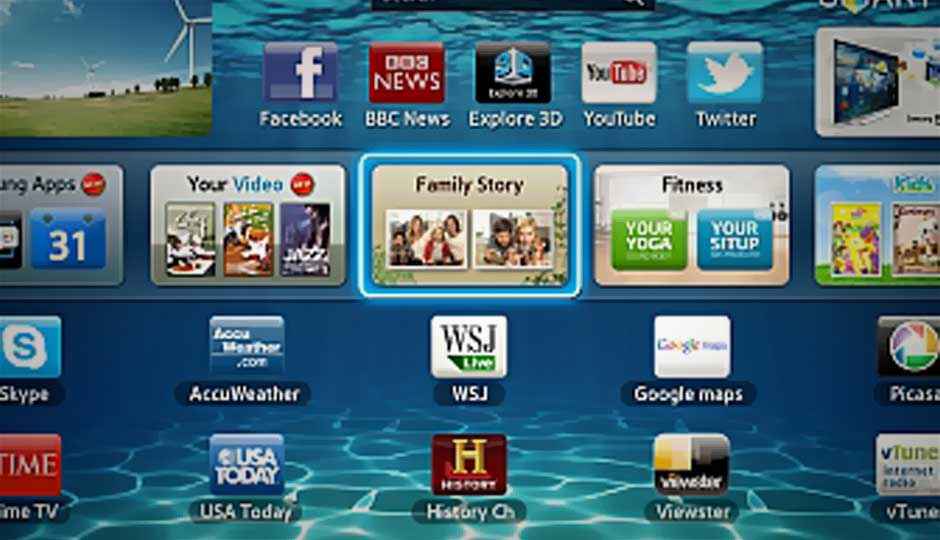
Any TV that works with anything that remotely resembles an “OS”, can connect to the Interne,t and download apps and content is labeled as a Smart TV. The idea seems simple – bring the same experience to the TV, as you would have on a smartphone or a laptop. And then some! But does that really work? We attempt to find out which features actually work, and which don’t.
Buying a laptop or a smartphone based on the spec sheet may be appreciated, but that doesn’t hold true for the Smart TV. With most other devices, you have a fair idea of what the performance might be, after one look at the spec sheet. However, with a television, you really have no generalization in terms of specifications and hardware. While technically you may compare between two LED televisions, the resulting performance may be vastly different. As a consumer, this can become quite intimidating on the shop floor, but you need to keep a few things in mind before splashing the cash on the most expensive HDTV and accessories out there!
Through this article, we are trying to illustrate the issues faced by the consumer who buy these smart TVs. After all, it is important to remember that those who are buying these TVs are mere humans, and may not be geeky or nerdy as generally presumed. Even the slightest bit of complication may stump them. And worse still, they may be sold a TV with features that they’ll probably never use, but end up paying more up-front.
Fact 1: Any long term use of apps on TV?
The idea behind portraying any TV as ”smart” is to load it with a storefront that connects users to what is technically an app download store. These are those apps that the manufacturer has approved for use on the TV. Samsung, LG, Sony etc., all have their unique application stores on the TV itself. The genres include social networking, games, streaming services, news and weather updates, shopping etc.
Reality check: Do you really need the TV to access Facebook? Or Twitter? Skype makes a bit of sense, since families can line up in front of the TV and chat with the cousin in New York! But for most of the other apps and stuff, you have the smartphone, laptop, PC and possibly even a tablet. Didn’t someone actually buy this TV to umm…watch TV? It is time TV manufacturers realize that apps don’t matter to the TV buyer. They may use them a few times, when the TV is new, and there is uniqueness to it all. But after the initial excitement dies down, how many of us actually use apps on the TV? I swear to everything that is Holy that no one I know does. Even though they may have the highest end Sony Bravia HX925 series!
Unfortunately, this does have a long-term impact on the plans of the TV manufacturers, with regards to the Content on Demand type services that may be launching soon. For example, Sony loads the Bravia televisions with a couple of on-demand content apps, and will surely look to offer more paid content soon. So, who is interested?
Fact 2: All Internet bit is confusing!
Most Smart TVs come with Wi-Fi and Ethernet capabilities built-in, while some have only Ethernet with the capability of adding Wi-Fi with a compatible dongle. If you have the TV placed somewhere you can extend the LAN cable from the router, then always prefer a wired network. Once hooked up to the Wi-Fi hotspot, you can then use the TV to view all web-based features we had talked about in the previous point.
Reality Check: I have personally had almost all my neighbours and relatives ring the doorbell, or the intercom telephone line, and ask how the Internet can be connected to their TV. Weirdly, most people aren’t aware that their TV has both Wi-Fi and Ethernet, or just Ethernet. Surely, this indicates to something going wrong on the shop floor. Are HDTVs being sold without the consumer getting the full / proper/ real information? Also, no one is willing to teach them how to connect the TV to a Wi-Fi hotspot, for example. The installation team will come, rush through installation, ensure that you can see some semblance of colours on the display, take your sign on the job card and rush off to the next job. Cannot blame them at all, considering they have too much daily workload to deal with. However, since setting up the TV is not very easy, be it for Wi-Fi, or for signing up with your “individual unique ID”, for example on one of the new Samsung TVs. I just want a simple Wi-Fi on/off button on the remote, just like you would on a laptop – show me the hotspots, and automatically hook up to them in the future. What is with 7 layers of menu to get to the option of connecting to a wireless network?
Fact 3: When did the TV become a part of your gym?
We are talking about motion control. The latest feature to be introduced into HDTVs is the ability to navigate the menu and change channels and volume via gestures using your hands. Essentially, port the one time setup at the very beginning, you can then activate this option via the predefined steps, and use gestures to control most things on the TV.
Secondly, there are motion control remotes, something that LG offers with the Cinema 3D TV range, for example. You wave the remote around like a Magic wand, and the magic happens! Sounds very convenient?
Reality Check: Actually, it isn’t. And it is slow – you spend a lot more time and energy doing the simplest tasks!
For this feature, we need to look at a couple of usage scenarios. Let us look at the very basic tasks first – changing channels, controlling volume, switching between sources, navigating between the menus and tweaking settings etc. For this, motion controls and remotes are just a pain to use. Depending on how fluent you have become with the entire process, it will take you anywhere between 100% to 200% more time to do the same task than it would if you simply picked up the conventional remote and tapped the buttons, like you have always done!
However, motion remotes have a huge advantage if you are using the TV for web browsing, social networking or playing games installed on the TV. Angry Birds will work well with a motion remote, something that the conventional remote cannot handle.
Fact 4: Is it okay to shout at the TV?
Another thing about the new age “smart” TVs is the ability to respond to voice commands. However, unlike the novelty factor that such a feature may have on smartphones, it does add a different dimension to the TV viewing experience.
Reality Check: Well, between this and motion / gesture controls, we would prefer this any day. However, how much sense do you see in talking to your TV? Particularly when you may be watching it at night, with the wife sleeping on the bed! Then there will be the inevitable issues with the audibility, your pitch, ambient noise, pronunciation and accent and with limited commands that can be understood by the system. We are fans of using the conventional remote to control tasks on the TV, and this hasn’t changed our opinion at all.
Fact 5: Too many remotes?
This brings us neatly on to our next point. We have been noticing off late that most smart TVs now come with not one but two remotes. One would be conventional type, while the other would give the impression that it has just landed from the future to bless your expenditure. Well, some users would be impressed – “look, I got two remotes with my TV, you got only one!”. But we don’t think it is anything to be proud of. In fact, this just makes the smart TV look very un-smart!
Reality Check: We don’t really see the point. As it is one remote feels more than enough. The justification gives for multiple remotes is that they are designed to offer something unique – like motion controls or a touchpad. By that logic, why has the primary remote not been tweaked ever since its evolution? Buttons have been added to it on a regular basis, and now it looks more complicated than ever. Why not clean that up a bit, give only the essential controls, remove all the not important bits, and integrate some features of the secondary remote into the primary one? We know it isn’t going to be easy, but seeing the amount of development that has gone into HDTVs recently, we wouldn’t be surprised if the various brains involved in the process actually pull it off. Just of the sake of simplicity and one less remote on the coffee table.
Fact 6: Fast, but sometimes quite ragged?
No, we are not talking about a racing driver! We are talking about the engines that handle fast moving scenes and visuals that we see in movies, videos and even advertisements. The idea is very simple – make these move more fluidly across the screen, without compromising on display quality and detailing. To give you an example of what is on offer, let us give you an example of what is on offer with various televisions.
|
Sony Bravia HX925
|
Motionflow XR800
|
|
Sony Bravia HX750
|
Motionflow XR400
|
|
LG LW6500
|
Motion Clarity 800
|
|
Samsung Series 8 LED Smart TV
|
ClearMotion 800
|
Reality Check: We are the first of appreciate this initiative, and support it wholeheartedly. However, there is a fundamental flaw in this feature, and not necessarily its own. Let us illustrate this by multiple scenarios.
Watching a Blu-Ray / 1080p and 720p uncompressed content: This is where you should probably have the motion flow settings set to max. Not only will any fast motion scenes look a lot smoother than otherwise, but with the panel capabilities permitting, there won't be any issues like screen tear etc. What helps is that the content is the uncompressed type, and as close to how it was originally intended as possible. For the movie buffs, this is probably worth the money they have spent.
Watching compressed HD videos, DVDs or even up-scaled HD content: This content is usually the stuff you download off the Internet, and slot in somewhere between the two extremes is this scenario. May work well with motion settings, but equally may make the reproduced visuals look bad. Depends on the amount of compression that particular file has been subjected to, and artifacts may be introduced into the image, due to interpolation.
Watching standard TV (DTH, Cable etc.): This is where this settings needs to be considerably toned down. Due to the extremely compressed nature of the content broadcast by cable and DTH operators (some more than others, but compressed nevertheless), there will be issues like screen tear, jitters or ghosting. The clearest example of this is in a cricket match, when the ball running towards the boundary. With motion settings set to their max, you will see three balls running towards the boundary – with the actual one being in the centre, and shadow ones preceding and succeeding it. Essentially, the engine is getting to play with less frames than ideally it should, and is overcompensating for that. Turn this setting to Standard / Low / Clear, and the issue goes away.
The logic that is brandished around on the shop floor is that with this feature, all visuals will look more fluid and smooth, but as we have explained, that isn’t always the case.
Fact 7: LED is technically a jazzed up LCD?
On the shop floor, we are told that there are three kinds of TVs that we can choose from. One is the Plasma. The second is the LCD, which has been around for ages. The third is the LED, but that isn’t very different from an LCD! Within this, there may be either of the two technologies implemented – full LED backlighting, or EDGE LED backlighting.
Reality Check: In a nutshell, LED TVs are essentially LCD TVs, but with LED backlighting instead of the fluorescent backlighting in LCDs. Even now, there are two types of LED TVs – with EDGE backlighting or the Full Array (also known as Full LED). With the former, what you get is a line of LEDs placed on the outside edge of the panel, allowing the TVs to be slimmer than ever. You can easily identify this kind of a TV by looking at it when it is switched on and not connected to any AV source. You will see “spotlighting” around the 4 edges of the panel. While this TV may be slim, but the black levels tend to be slightly less deep than Full LEDs and the edges seem brighter than the centre of the display. While most people cannot make out the difference, the real finicky movie buffs would make this out in a second!
With Full Array, a bunch of LEDs are placed behind the screen, in multiple rows, leading to more even lighting across the panel. Another advantage is that manufacturers can deploy Local Dimming for individual LEDs, leading to deeper details in scenes – greater difference between the bright and dark areas, thanks to the dimming of the necessary LEDs individually. Even Edge LEDs are now using the Local Dimming feature, but using diffusers and guides to attempt at having a similar effect as actual dimming.
From our experience, Local Dimming works well only on full LEDs, while the attempt on edge LED televisions mostly leads to uneven brightness, usually known as the Halo effect – you see block of leaking light around a brightly lit object in the midst of black colour.
Fact 8: Contrast Ratios – Not always black and white?
This is the simplest definition of Contrast Ratio: The difference between the whitest whites and the darkest blacks that a television display can offer. The detailing and black levels of the TV depend on this – the darker the better. There are claims of enormous numbers by TV manufacturers – they will put one and follow it up with a million zeros and claim the figure is 1000000:1 or something like that. However, in reality, the numbers are much lower.
Reality check: Let us start with two examples. The Bravia HX750 series has an actual contrast ratio of 1129:1, while the HX925 has a contrast ratio of 963:1. To put this in perspective, the HX925 is the most expensive HDTV series on the entire Bravia range from Sony, while the HX750 is two notches below that.
To put it simply, the adage that the more expensive the TV, the better the performance isn’t necessarily true. And equally, take the contrast ratio numbers thrown around by TV manufacturers with a pinch of salt. We have a table of some of the TVs that we have tested (40/42-inches and above), with the actual contrast ratios, as tested.
HDTVs Contrast Ratios: What our tests show
|
Sony Bravia HX925
|
963:1
|
Starts @ Rs 1,53,900
|
|
Sony Bravia HX750
|
1129:1
|
Starts @ Rs 83,900
|
|
LG LW6500 Cinema 3D
|
700:1
|
Starts @ Rs 1,04,900
|
|
Samsung Series 8 LED Smart TV
|
983:1
|
Starts @ Rs 1,58,000
|
|
Panasonic Smart Viera DT50K
|
446:1
|
Starts @ Rs 1,33,900
|
Incidentally, the most inexpensive television range in this entire list has the best contrast ratio of all! Before the fanboys decide to attack us, (verbally, mentally, physically or otherwise), let us specify that we use the Spyder Elite benchmark (hardware software) to derive the actual scores. Along the way, we ensure that the Contrast, Brightness, Backlight, advanced contrast and noise reduction settings are all equalized across all televisions to level the playing field. All televisions are tested in the exact same environment – lighting, room layout etc., so that all factors remain the same.
While you may get to see inflated ratios like 1,00,000:1 and above on the spec sheet, the real figures are much lower. However, to put things in perspective, we believe that scores between 900 and 1200 and above in our benchmark tests indicate very good performance, with deep blacks. Anything lesser than that, and the blacks tend to become less deep.
Fact 9: What kind of 3D works?
Well, 3D isn’t as simple as some people thing it is. The logic that all 3D TVs work the same way, but in reality, they don’t. Active 3D seems to be the most popular one around, until LG brought in the Cinema 3D range with the Passive 3D tech, technically called the Film type Patterned Retarder. Read our Active 3D versus Passive 3D feature for more details.
Reality Check: The way Active 3D works is that the battery-operated glasses rely on signals from the emitter in the TV on when to close the shutter for which eye. This rapidly opening and closing of the shutter blocks content from an individual eye at a time. The result isn’t pretty – the glasses are heavy, and the eyes tend to feel the strain after some time of viewing 3D content using the Active 3D glasses. Also, the sweet spot for this type of technology is quite limited – essentially a straight line, with only little leeway either side, which means not more than a couple of people can sit and actually enjoy 3D on a 42-46-inch TV.
Passive 3D, on the other hand, uses much lighter polarized glasses. The TV doesn’t have a transmitter, but polarizes each line of pixels into even and odd. The odd lines will be visible to the left eye, and the even numbered lines to the right eye. Since there is no active shutter, the glasses can be lighter and more comfortable for wearing for longer durations, at least for some people. Also, the viewing angles are wider than with Active 3D, which makes this a better deal for family viewing scenarios. And less strain on the eyes as well! The only drawback is that with polarized glasses, you only get a max resolution of 1920 x 540 pixels, due to the blocking of some lines.
So, the next time you go to buy a 3DTV, don’t let the guy on the shop floor tell you all 3D TVs are the same!
Fact 10: Why such poor sound quality?
You have just paid Rs 2,50,000 for a 55-inch 3D LED TV, and are quite proud of that fact. Now you hope to enjoy movies in cinema quality, with surround sound. You may be forgiven for believing that – after all, the box had “3D Surround Sound” written on that in bold fonts, at multiple places. However, you may be in for a shock.
Reality Check: No matter what the price of the TV, we have found that it is the built-in speakers will be nothing short of a crushing disappointment. There will definitely be satisfactory volume punch, but LFE will not be handled well at all, and there will definitely not be any surround sound! No matter what the spec sheet may boast of, you will have to buy a separate home theater or speaker setup to actually enjoy the HDTV investment to the fullest. It is indeed a sad scene, but very true.

